#mr. monk visits the asylum
Explore tagged Tumblr posts
Text



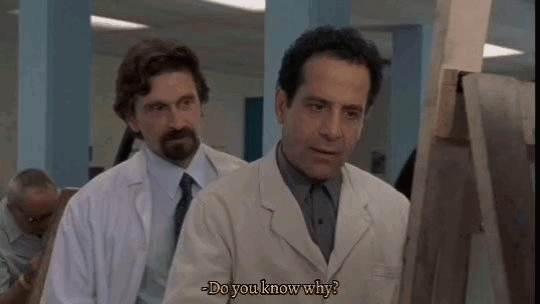





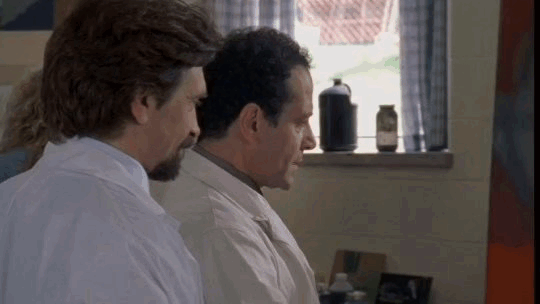
Monk, Season 1 Episode 6, Mr. Monk goes to the Asylum
#monk#mr monk#detective monk#monk the detective#mr. monk#mr. monk visits the asylum#season 1 episode 6#season 1 ep 6#ep 6#episode 6#szn 1 ep 6#s 1 ep 6#s1ep6#s1 ep6#gif set#show gif#gifs#my gifs#gifset#monk gif set#monk gif#adrian monk#adrian monk gif#tv show gifs#qoutes#art advice
43 notes
·
View notes
Text
Spooky happenings in London 👻
We have reached the end of another unit. As per tradition I am sealing off the London bit of blog posts with a finale of haunted places in London. Now the last list from Vienna only had 5 places but London had tons of articles about haunted places so this one is a lot longer. I apologize for the lengthy read but let’s be honest, who doesn’t love a good ghost story.
Continue reading if you dare 😱😱
1. Tower of London
Starting off with a location that we’ve talked about! The Tower of London. With such an old location it’s no surprise that there’s a few ghosties running about. Here "off with her head" wasn't just a saying, it was reality. In 1536, Queen Anne Boleyn was arrested and beheaded at the Tower Green. Other royal ghosts lurk in the castle, too. Arbella Stuart, cousin of King James I, was allegedly murdered here. In Bloody Tower two young princes, Edward V and Richard, were believed to be murdered by the Duke of Gloucester. These young boys’ voices and screams are heard throughout the tower.

2. Theatre Royal
London’s renowned Theatre Royal has had it’s fair share of haunted sightings over the years. According to both actors and staff members, the ghost of Joseph Grimaldi can be seen on the premises. This man is the inventor of the modern clown and called the “Man in Grey.” He was allegedly stabbed in the Theatre Royal and his bones were discovered in a side passage in 1848. Now I know that this sounds pretty grisly but the theatre isn’t all that spooky in real life. The appearance of one of the ghost is actually a sign of good luck for performances.

3. Covent Garden
We’ve talked about Covent Garden briefly in class so I thought that this would be a nice ad-in. This London Underground stop brings you to an awesome shopping area and one of London’s best theatre districts. But we aren’t talking about shopping, are we? Nah we’re talking about ghosts. The ghost that haunts this station is named William Terriss and he has been seen walking the platforms wearing a gray suit. Bizarre noises are also heard when no travelers are around.

4. Old Bailey
The Central Criminal Court, otherwise known as the Old Bailey, has a disturbing past. The court sits on the former site of Newgate Prison. Along with the building itself, ghosts seem to wander the area surrounding the Old Bailey. If you’re looking for a ghost-filled pub, sit down for a drink at the Viaduct Tavern on Newgate Street. One ghost, Fred, apparently pours out guests’ drinks and flickers the lights at this spooky pub so be aware of Fred 👀

5. Westminster Abbey
Westminster Abbey is an inevitably haunted destination, considering that it houses more than 3,000 buried bodies. The most common ghostie that haunts Westminster Abbey is Father Benedictus, a former Benedictine monk of the abbey. In 1900, a woman reported a vivid sighting of him. In this sighting after about 25 seconds, Father Benedictus vanished into the walls of the church. In 1932, two visitors reported talking to him. Too bad this hasn’t happened in today’s day and age so we could get it on video. If you did want to try and see Father he’s typically appearing between 5 and 6 p.m.

6. St. Paul’s Cathedral
Another place that we have talked about in class! So spooky! Alright so St. Paul’s Cathedral is definitely an eerie place to visit. Its most well-known ghost is a whistling clergyman, who haunts the west end of the chapel. In Ghosts of London, author Elliott O’Donnell recalls meeting an American couple who witnessed a black cloud suddenly appearing in the chapel. Now if we go here and I see a black cloud I’m out. Gone. Never to return as that demon spirit black cloud is not coming near me.
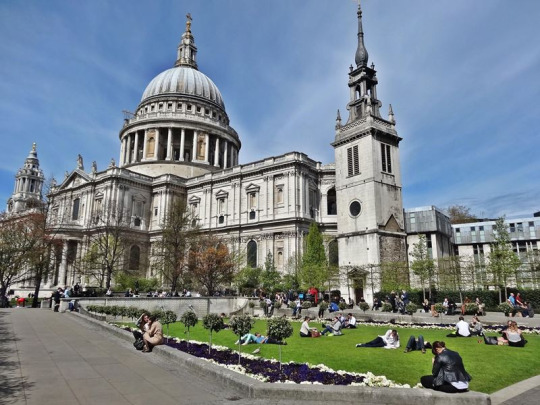
7. Highgate Cemetery
This creepy cemetery opened in 1839 and was the go-to burial spot for Victorian socialites. But by the 1960s, it fell into a state of disrepair and decay leaving a spooky old cemetery. On Swain’s Lane, a street that cuts through the cemetery, several paranormal incidents have been reported. Some Londoners even claim to have seen a vampire lurking in the darkness. Vampire hunt anyone?

8. 50 Berkeley Square, Mayfair
This brick house was dubbed as London's most haunted house in the twentieth century both because of its deranged ex-tenant and resident female ghost. Both stories are fascinating and haunting, in all senses. The young woman allegedly threw herself from the top floor after being abused by her uncle and sometimes appears as a brown mist. Long standing tenant Mr. Myers locked himself in this house until he passed away and is also believed to haunt the premises. Apparently Myers went mad after he was rejected by his fiancée and let the house crumble around him. He died in 1874. On top of all that it's said a maid who slept one night in the attic room was found the next day so deeply distressed that she died the next day in an asylum.

9. The Parkland Walk Spriggan
If you went through my past blog posts I have mentioned this treasure before. Abandoned railway lines don’t get creepier than this – the Parkland Walk, which runs between Finsbury Park and Alexandra Palace. It is lush with vivid greenery but there is still something unsettling about wandering along the overgrown cutting. The part that passes Crouch End is the spookiest stretch of the route, where a looming ‘spriggan’ spirit watches from an unused railway arch, ready to startle unsuspecting passers-by.

10. The Greenwich Foot Tunnel
This tunnel, opened in 1902, runs under the river Thames and connects Greenwich to the the Isle of Dogs. Walking down its damp and narrow path will already leave you feeling uneasy, even without the ghosts of a Victorian man and woman strolling over from the other side. While no one knows exactly who this couple are, they’re spotted frequently late at night although I don’t know who would want to walk down a creepy tunnel so late. Supposedly, their footsteps can be heard bouncing down the leaking walls of the tunnel. Noooooo thank you I’ll take a cab.
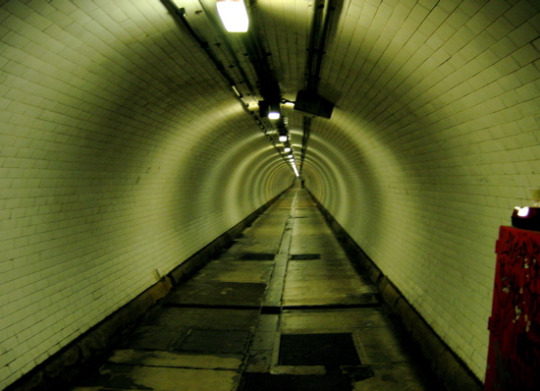
11. Old Operating Theatre Museum
It sort of goes without saying this place is probably haunted as it was an actual surgical practice back when surgery wasn’t such an easy-going process. Surgical anesthetic wasn’t invented until 1846, and this place definitely predates that. Most patients died despite the best intentions of the surgeons. It’s the oldest surviving surgical theatre in Europe, and of course is no longer in use.
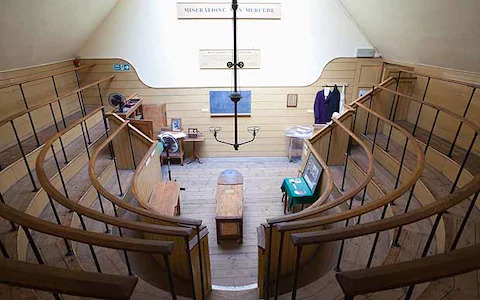
If you made it this far, how bothered are you by the count of 11 instead of a nice, even 10?
Sources:
https://www.travelchannel.com/interests/haunted/photos/haunted-london-1 https://www.timeout.com/london/things-to-do/haunted-places-in-london https://www.standard.co.uk/go/london/attractions/ten-of-the-most-haunted-places-in-london-a3806806.html
0 notes
Text
Myanmar's Biggest MMA Star Wants His People to Be Free
Myanmar is a land of few famous athletes, or really any celebrities at all.
Instead, its A-listers tend to fall in the political category, beginning with General Aung San, the father of Myanmar's independence from Britain, and ending with his daughter, Nobel Peace Prize winner and current state counselor Aung San Suu Kyi. But beyond politicians and a handful of notorious dictators and drug lords, the nation has few figures of international renown. A half-century of socialism, military coups, and isolationism will do that to a country.
This context helps explain the mania that accompanies Myanmar-born Aung La Nsang (19-10) on a Wednesday afternoon in Yangon, two days ahead of his ONE Championship middleweight world title fight against the undefeated Russian Vitaly Bigdash (9-0) on June 30.
The 32-year-old mixed martial artist sits in the lobby of a luxury hotel, surrounded by a swirling vortex of cameras. Everybody—his entourage, the police, the reporters, the photographers, the street vendors, the PR agents, the fans, the selfie-seeking security guards—needs something from him. Another quote. Another photo. Another appearance.
If he tries to escape for a moment into his Instagram feed, he'll find incessant promotions for his upcoming fight. On Facebook, a local commercial for insect repellent features him punching out mosquitoes in a locker room; it has racked up 613,000 views in less than 24 hours.
Aung La Nsang is Myanmar's biggest sports star. Courtesy Aung La Nsang
There is no respite from the noise for Myanmar's biggest sports star, but at least nobody is asking him to weigh on the country's complicated politics. Aung La is from the northern state of Kachin, home to one of the several ethnic conflicts that have raged in the country's border regions since the military coup of 1962. He left to study in the U.S. during a ceasefire, but the conflict reignited in 2011; since then, fighting has displaced approximately 130,000 civilians—77 percent of them women—into refugee camps across the state. Aung La, however, has escaped most of the direct impacts of the violence, having received political asylum in the U.S. after moving there in 2003.
He discovered MMA after moving to the States, eventually going pro and fighting in regional circuits. People in Myanmar first took notice of Aung La in 2012 after he knocked out an opponent during the first round of a CFFC fight and waved a Kachin flag in celebration. Back then, video of the moment caught the attention of those in his home state. Five years later, the rest of the country has jumped on the bandwagon.
"I mean, it's weird," Aung La says, sounding a bit alarmed by the immensely niche popularity he commands in the Golden Land. "I don't know if I dislike it… but I could care less."
"The only reason I am here is to get that world title."
The son of a successful jade merchant in Myitkyina who was educated at Yangon International School, Aung La Nsang left Myanmar to study agriculture science at Andrews University, a Seventh-day Adventist school in Michigan. Later, he worked as a migratory beekeeper while trying to get his MMA career off the ground during the late 2000s and early 2010s.
For a while, Aung La was just another guy trying to make it on the U.S. circuits, and a virtual unknown in his native country, where MMA has traditionally struggled to get a foothold against the national sport of lethwei. But support began to surge when he signed with ONE Championship, Asia's largest MMA enterprise, in 2014.
The first Myanmar national to join a major international promotion, Aung La agreed to a fight in Yangon against Egypt's Muhammed Ali in March 2016. By the time he arrived in his old stomping grounds, he discovered that he was no longer just a Kachin video sensation—a rabid fan base comprising wide swaths of Myanmar's various ethnic groups wanted to claim him as their own, as well.
Victories in that first fight and the next one in Yangon eight months later have now made him a nationwide icon, recognizable to anyone in Myanmar person with an active Facebook account.
"Whenever Aung La shows up anywhere in Myanmar, expect a massive throng of fans," says Loren Mack, ONE Championship's public relations head. "He commands a superstar presence."
In Myanmar, Aung La Nsang can't walk down the street without being mobbed. Photo by RJ Vogt
In the U.S., however, there are no throngs waiting for Aung La Nsang—just classes full of children waiting to learn Brazilian jiu jitsu. Aung La became a U.S. citizen in 2015 and runs a branch of the Crazy88 MMA school and gym in the Baltimore area, where he lives with his wife and son, teaching and training for fights in his free time while enjoying relative anonymity.
"The guys that watch ONE, the guys that watch not just the UFC but the real hardcore MMA fans, they might stop me," he says, mulling over whether his fame translates to the States. "But usually… no." Here in Myanmar, everyone stops him, from Muslim cab drivers to Buddhist nationalist monks to armed police officers. For a country bitterly divided and eternally at war, his popularity is an unusually unifying factor. Consider that former president and general U Thein Sein, whose term saw the beginning of renewed Myanmar Army offensives on Kuchin Independence Army outposts, once summoned Aung La to visit him in the nation's capital and pose for a photo. Or that countless military officers will tune in to watch the Kachin man's cagematch at the same time as scores of the refugees they've displaced.
"We support him because we are proud of him as a Myanmar MMA fighter," said Myo Lwin, a young Bamar fan who had never watched MMA before Aung La. "We don't care if he is Kachin."
Aung La Nsang began as a hero to the Kachin people, but now the entire country roots for him. Photo by RJ Vogt
This past March, the fighter parlayed his celebrity status into a charity auction in Yangon, selling old gloves and autographed memorabilia to raise more than US$6,000 for internally displaced persons (IDPs) in Kachin . In April, he returned to his birthplace to deliver the goods and visit family he hadn't seen in 14 years.
"When I left I was a teenager," he says. "Now I'm a father. It's almost a whole lifetime."
During the trip, he spent time at the Mai Na IDP camp in Myitkyina, where roughly 2,000 people living on as little as 25 cents per day. The humbled fighter says he was a bit overwhelmed when he arrived and a horde of small children rushed toward him.
"They don't have it as good as us, and it's just nice to know that I was able to help," he says.
Hkawng Dau, a former teacher at the Mai Na camp, said that the way Aung La Nsang supports those in need endears him to the wider Kachin community. He may be Myanmar's national hero, but he's still a Kachin boy.
"He sold his trophies and awards to help the IDPs," Hkawng Dau said. "Since he is our own blood, I want him to be more successful."
Success won't come easy against Bigdash, the champion who stopped Aung La Nsang's four-match win streak during their first meeting on January 15. That bout was the culmination of Aung La's career, his first shot at a major promotion title—but it came on dangerously short notice, with Aung La only getting the call after Bigdash's initial opponent backed out ten days before the fight.
Given little time to prepare, Aung La accepted the five-round fight and flew to Jakarta for a 25-minute slugfest.
"Aung is ready to fight anyone at any time," says Jeff Mueller, a fellow instructor at Crazy88. "But taking a fight on ten days' notice, no matter who the opponent is, is a scary proposition for everyone else in your training camp."
Aung La Nsang took his first fight with Bigdash on short notice. Courtesy Aung La Nsang
The lack of training didn't seem to be a problem through the fight's first two rounds, but after Bigdash landed a hard, high kick to the neck halfway through the third, Aung La struggled to hold himself together. The bigger Russian kept him squeezed in a clinch for most of the final two rounds but could not manage to earn a submission, settling for a unanimous judges' decision victory. Bigdash bloodied Aung La's face so badly that he did not even appear at the decision announcement after the final bell.
Despite his clear defeat, the Myanmar fighter had proved himself a worthy challenge by becoming the first opponent to take Bigdash for a full fight. Setting up a rematch of the two middleweights in Yangon was a no-brainer for ONE Championship, which has not so subtly titled the event "Light of a Nation" to really drive home the drama.
This time, Aung La arrives "in the best shape I've seen him in in years" according to his training partner Mueller. But Bigdash, riding an unbeaten record and the previous victory in January, remains favored to retain the belt.
Dan Hkun Aung, an instructor at Kachinland School of Arts and Sciences in Myitkyina, said this underdog aspect makes the upcoming fight a particularly exciting phenomenon for Kachin people, who have fought throughout their history against traditionally stronger powers, including the British, Japanese, Chinese, and Burmese militaries.
"Last time, Mr. Aung La lost [to Bigdash]," Dan Hkun Aung said. "But this time, it's a bigger challenge—he wants to fight again. It's kind of like a 'never give up' attitude. Aung La represents that Kachin fighting spirit, so people really love it."
Aung La Nsang is well aware of this heritage. He wears the word "Jinghpaw" (the word for Kachin people in their language) tattooed on his back. On either side of the text, wings spread across his shoulders to symbolize freedom for Kachin people.
"I know they can relate to my fighting—Kachin people are always the underdog," he says. "Me taking on the world champion as an underdog is an awesome story they can relate to."
Myanmar's Biggest MMA Star Wants His People to Be Free published first on http://ift.tt/2pLTmlv
0 notes
Text
Myanmar's Biggest MMA Star Wants His People to Be Free
Myanmar is a land of few famous athletes, or really any celebrities at all.
Instead, its A-listers tend to fall in the political category, beginning with General Aung San, the father of Myanmar's independence from Britain, and ending with his daughter, Nobel Peace Prize winner and current state counselor Aung San Suu Kyi. But beyond politicians and a handful of notorious dictators and drug lords, the nation has few figures of international renown. A half-century of socialism, military coups, and isolationism will do that to a country.
This context helps explain the mania that accompanies Myanmar-born Aung La Nsang (19-10) on a Wednesday afternoon in Yangon, two days ahead of his ONE Championship middleweight world title fight against the undefeated Russian Vitaly Bigdash (9-0) on June 30.
The 32-year-old mixed martial artist sits in the lobby of a luxury hotel, surrounded by a swirling vortex of cameras. Everybody—his entourage, the police, the reporters, the photographers, the street vendors, the PR agents, the fans, the selfie-seeking security guards—needs something from him. Another quote. Another photo. Another appearance.
If he tries to escape for a moment into his Instagram feed, he'll find incessant promotions for his upcoming fight. On Facebook, a local commercial for insect repellent features him punching out mosquitoes in a locker room; it has racked up 613,000 views in less than 24 hours.
Aung La Nsang is Myanmar's biggest sports star. Courtesy Aung La Nsang
There is no respite from the noise for Myanmar's biggest sports star, but at least nobody is asking him to weigh on the country's complicated politics. Aung La is from the northern state of Kachin, home to one of the several ethnic conflicts that have raged in the country's border regions since the military coup of 1962. He left to study in the U.S. during a ceasefire, but the conflict reignited in 2011; since then, fighting has displaced approximately 130,000 civilians—77 percent of them women—into refugee camps across the state. Aung La, however, has escaped most of the direct impacts of the violence, having received political asylum in the U.S. after moving there in 2003.
He discovered MMA after moving to the States, eventually going pro and fighting in regional circuits. People in Myanmar first took notice of Aung La in 2012 after he knocked out an opponent during the first round of a CFFC fight and waved a Kachin flag in celebration. Back then, video of the moment caught the attention of those in his home state. Five years later, the rest of the country has jumped on the bandwagon.
"I mean, it's weird," Aung La says, sounding a bit alarmed by the immensely niche popularity he commands in the Golden Land. "I don't know if I dislike it… but I could care less."
"The only reason I am here is to get that world title."
The son of a successful jade merchant in Myitkyina who was educated at Yangon International School, Aung La Nsang left Myanmar to study agriculture science at Andrews University, a Seventh-day Adventist school in Michigan. Later, he worked as a migratory beekeeper while trying to get his MMA career off the ground during the late 2000s and early 2010s.
For a while, Aung La was just another guy trying to make it on the U.S. circuits, and a virtual unknown in his native country, where MMA has traditionally struggled to get a foothold against the national sport of lethwei. But support began to surge when he signed with ONE Championship, Asia's largest MMA enterprise, in 2014.
The first Myanmar national to join a major international promotion, Aung La agreed to a fight in Yangon against Egypt's Muhammed Ali in March 2016. By the time he arrived in his old stomping grounds, he discovered that he was no longer just a Kachin video sensation—a rabid fan base comprising wide swaths of Myanmar's various ethnic groups wanted to claim him as their own, as well.
Victories in that first fight and the next one in Yangon eight months later have now made him a nationwide icon, recognizable to anyone in Myanmar person with an active Facebook account.
"Whenever Aung La shows up anywhere in Myanmar, expect a massive throng of fans," says Loren Mack, ONE Championship's public relations head. "He commands a superstar presence."
In Myanmar, Aung La Nsang can't walk down the street without being mobbed. Photo by RJ Vogt
In the U.S., however, there are no throngs waiting for Aung La Nsang—just classes full of children waiting to learn Brazilian jiu jitsu. Aung La became a U.S. citizen in 2015 and runs a branch of the Crazy88 MMA school and gym in the Baltimore area, where he lives with his wife and son, teaching and training for fights in his free time while enjoying relative anonymity.
"The guys that watch ONE, the guys that watch not just the UFC but the real hardcore MMA fans, they might stop me," he says, mulling over whether his fame translates to the States. "But usually… no." Here in Myanmar, everyone stops him, from Muslim cab drivers to Buddhist nationalist monks to armed police officers. For a country bitterly divided and eternally at war, his popularity is an unusually unifying factor. Consider that former president and general U Thein Sein, whose term saw the beginning of renewed Myanmar Army offensives on Kuchin Independence Army outposts, once summoned Aung La to visit him in the nation's capital and pose for a photo. Or that countless military officers will tune in to watch the Kachin man's cagematch at the same time as scores of the refugees they've displaced.
"We support him because we are proud of him as a Myanmar MMA fighter," said Myo Lwin, a young Bamar fan who had never watched MMA before Aung La. "We don't care if he is Kachin."
Aung La Nsang began as a hero to the Kachin people, but now the entire country roots for him. Photo by RJ Vogt
This past March, the fighter parlayed his celebrity status into a charity auction in Yangon, selling old gloves and autographed memorabilia to raise more than US$6,000 for internally displaced persons (IDPs) in Kachin . In April, he returned to his birthplace to deliver the goods and visit family he hadn't seen in 14 years.
"When I left I was a teenager," he says. "Now I'm a father. It's almost a whole lifetime."
During the trip, he spent time at the Mai Na IDP camp in Myitkyina, where roughly 2,000 people living on as little as 25 cents per day. The humbled fighter says he was a bit overwhelmed when he arrived and a horde of small children rushed toward him.
"They don't have it as good as us, and it's just nice to know that I was able to help," he says.
Hkawng Dau, a former teacher at the Mai Na camp, said that the way Aung La Nsang supports those in need endears him to the wider Kachin community. He may be Myanmar's national hero, but he's still a Kachin boy.
"He sold his trophies and awards to help the IDPs," Hkawng Dau said. "Since he is our own blood, I want him to be more successful."
Success won't come easy against Bigdash, the champion who stopped Aung La Nsang's four-match win streak during their first meeting on January 15. That bout was the culmination of Aung La's career, his first shot at a major promotion title—but it came on dangerously short notice, with Aung La only getting the call after Bigdash's initial opponent backed out ten days before the fight.
Given little time to prepare, Aung La accepted the five-round fight and flew to Jakarta for a 25-minute slugfest.
"Aung is ready to fight anyone at any time," says Jeff Mueller, a fellow instructor at Crazy88. "But taking a fight on ten days' notice, no matter who the opponent is, is a scary proposition for everyone else in your training camp."
Aung La Nsang took his first fight with Bigdash on short notice. Courtesy Aung La Nsang
The lack of training didn't seem to be a problem through the fight's first two rounds, but after Bigdash landed a hard, high kick to the neck halfway through the third, Aung La struggled to hold himself together. The bigger Russian kept him squeezed in a clinch for most of the final two rounds but could not manage to earn a submission, settling for a unanimous judges' decision victory. Bigdash bloodied Aung La's face so badly that he did not even appear at the decision announcement after the final bell.
Despite his clear defeat, the Myanmar fighter had proved himself a worthy challenge by becoming the first opponent to take Bigdash for a full fight. Setting up a rematch of the two middleweights in Yangon was a no-brainer for ONE Championship, which has not so subtly titled the event "Light of a Nation" to really drive home the drama.
This time, Aung La arrives "in the best shape I've seen him in in years" according to his training partner Mueller. But Bigdash, riding an unbeaten record and the previous victory in January, remains favored to retain the belt.
Dan Hkun Aung, an instructor at Kachinland School of Arts and Sciences in Myitkyina, said this underdog aspect makes the upcoming fight a particularly exciting phenomenon for Kachin people, who have fought throughout their history against traditionally stronger powers, including the British, Japanese, Chinese, and Burmese militaries.
"Last time, Mr. Aung La lost [to Bigdash]," Dan Hkun Aung said. "But this time, it's a bigger challenge—he wants to fight again. It's kind of like a 'never give up' attitude. Aung La represents that Kachin fighting spirit, so people really love it."
Aung La Nsang is well aware of this heritage. He wears the word "Jinghpaw" (the word for Kachin people in their language) tattooed on his back. On either side of the text, wings spread across his shoulders to symbolize freedom for Kachin people.
"I know they can relate to my fighting—Kachin people are always the underdog," he says. "Me taking on the world champion as an underdog is an awesome story they can relate to."
Myanmar's Biggest MMA Star Wants His People to Be Free published first on http://ift.tt/2pLTmlv
0 notes